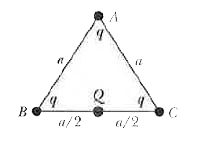A
B
C
D
Text Solution
Verified by Experts
The correct Answer is:
Topper's Solved these Questions
ELECTRIC CHARGES AND FIELDS
RESNICK AND HALLIDAY|Exercise Practice Questions (Matrix-Match)|8 VideosELECTRIC CHARGES AND FIELDS
RESNICK AND HALLIDAY|Exercise Practice Questions (Integer Type )|3 VideosELECTRIC CHARGES AND FIELDS
RESNICK AND HALLIDAY|Exercise Practice Questions (More than one correct Type )|3 VideosELASTICITY
RESNICK AND HALLIDAY|Exercise PRACTICE QUESTIONS (Integer Type)|3 VideosELECTRIC POTENTIAL
RESNICK AND HALLIDAY|Exercise (PRACTICE QUESTIONS) Integer Type|1 Videos
Similar Questions
Explore conceptually related problems
RESNICK AND HALLIDAY-ELECTRIC CHARGES AND FIELDS-Practice Questions (Linked Comprehension)
- The given figure shows an equilateral triangle ABC. A positive point c...
Text Solution
|
- The given figure shows an equilateral triangle ABC. A positive point c...
Text Solution
|
- The given figure shows five particles are shot from left into a region...
Text Solution
|
- The given figure shows five particles are shot from left into a region...
Text Solution
|
- The given figure shows five particles are shot from left into a region...
Text Solution
|
